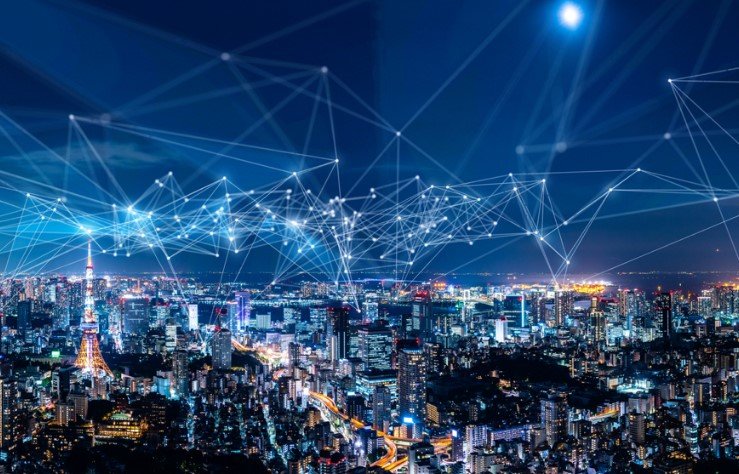Smart cities are not just a futuristic concept, but a reality that is shaping the way we live and work in urban areas. Smart cities use technology to optimize infrastructure and services, enhance the citizen experience, and promote sustainability and livability. In this article, we will explore some of the innovations in urban technology that are driving the Smart City 2.0 vision in 2023.

AI and IoT: The Core of Smart City 2.0
Artificial intelligence (AI) and the Internet of Things (IoT) are the key technologies that enable smart city solutions. AI is the ability of machines to perform tasks that normally require human intelligence, such as learning, reasoning, and decision-making. IoT is the network of physical devices, sensors, and actuators that collect and exchange data over the internet. Together, AI and IoT can analyze large amounts of data from multiple sources, generate insights and actions, and automate processes and systems.
Some of the benefits of AI and IoT for smart cities are:
- Improved efficiency and productivity: AI and IoT can help optimize resource utilization, reduce costs, and increase performance. For example, smart meters can monitor and adjust energy consumption, smart traffic lights can regulate traffic flow, and smart waste bins can notify when they need to be emptied.
- Enhanced safety and security: AI and IoT can help prevent and respond to emergencies, protect public health, and ensure law and order. For example, smart cameras can detect and report crimes, smart sensors can detect and alert to fire and gas leaks, and smart drones can assist in disaster relief and rescue operations.
- Increased convenience and comfort: AI and IoT can help improve the quality of life and well-being of citizens, provide personalized and accessible services, and create a more connected and inclusive community. For example, smart apps can provide real-time information and guidance, smart health devices can monitor and improve health conditions, and smart platforms can offer internet access and battery charging for personal devices.
Smart City Projects and Initiatives in 2023
Around the world, many cities are implementing and experimenting with smart city solutions, using AI and IoT to address various challenges and opportunities. Here are some examples of smart city projects and initiatives in 2023:
- CITIIS: CITIIS, or the City Investments to Innovate, Integrate, and Sustain, is a sub-component of the Government of India’s Smart Cities Mission. It is a joint program of the Ministry of Housing and Urban Affairs, Agence Francaise de Development (AFD), the European Union (EU), and the National Institute of Urban Affairs (NIUA). The program aims to assist 12 cities in India to develop and implement innovation-driven and sustainable urban infrastructure projects, such as smart mobility, urban regeneration, social and organizational innovation, and public open spaces. The program also provides capacity development, technical assistance, and knowledge sharing for the cities.
- ASME’s 10 Smartest Cities of 2023: The American Society of Mechanical Engineers (ASME) has compiled a list of 10 smart cities that leverage technology in 2023, based on various criteria such as mobility, healthcare, security, water, energy, engagement and community, economic development and housing, and waste. The list includes cities such as Singapore, Copenhagen, Dubai, Seoul, Amsterdam, Barcelona, New York, Tokyo, London, and Helsinki. Each city has its strengths and achievements in using AI and IoT to improve urban living. For example, Singapore is known for its smart nation initiative, which aims to harness digital technologies to enhance public services, empower citizens, and create economic opportunities. Copenhagen is known for its green and sustainable vision, which aims to become the world’s first carbon-neutral capital by 2025. Dubai is known for its ambitious and futuristic plans, which include building the world’s first 3D-printed office, the world’s first hyperloop system, and the world’s first autonomous taxi service.
- Deloitte’s Smart City Overview: Deloitte, a global consulting firm, has published an overview of smart city development, highlighting the trends, challenges, and opportunities for urban innovation. The overview defines a smart city as a city that operates at the intersection of the 3Ds: data, digital, and human-centered design. The overview also outlines the three layers that work together to make a city smart: a technology base, a specific application, and an enabling environment. The overview also provides examples of smart city solutions in various domains, such as mobility, healthcare, security, water, energy, engagement and community, economic development and housing, and waste. The overview also discusses the role of stakeholders, such as government, businesses, and residents, in co-creating and co-delivering smart city solutions.
The Future of Smart Cities
Smart cities are not a one-size-fits-all solution but a dynamic and evolving process that requires constant adaptation and innovation. Smart cities are also not an end goal but a means to achieve a better urban future. As technology advances and urban challenges increase, smart cities will need to embrace new opportunities and overcome new barriers. Some of the future trends and directions for smart cities are:
- More data-driven and evidence-based decision-making: Smart cities will need to leverage the power of data and analytics to inform and improve policies, strategies, and actions. Smart cities will also need to measure and evaluate the impact and outcomes of smart city solutions, using indicators and metrics that reflect the needs and aspirations of citizens.
- More human-centric and user-friendly design: Smart cities will need to put people at the center of smart city solutions, ensuring that they are accessible, inclusive, and responsive to the diverse and changing needs and preferences of citizens. Smart cities will also need to engage and empower citizens as co-creators and co-producers of smart city solutions, using participatory and collaborative methods and tools.
- More integrated and holistic approach: Smart cities will need to adopt a systems-thinking and cross-sectoral approach, breaking down the silos and barriers between different domains, disciplines, and stakeholders. Smart cities will also need to balance the trade-offs and synergies between different objectives and outcomes, such as efficiency and equity, innovation and resilience, and growth and sustainability.
Smart cities are the future of urban living, and the future is now. By harnessing the potential of AI and IoT, smart cities can transform the way we live and work in urban areas, making them more efficient, sustainable, and livable. Smart cities can also create new opportunities and challenges for urban innovation, requiring continuous learning and improvement. Smart cities are not only smart but also wise, as they strive to create a better urban future for all.






